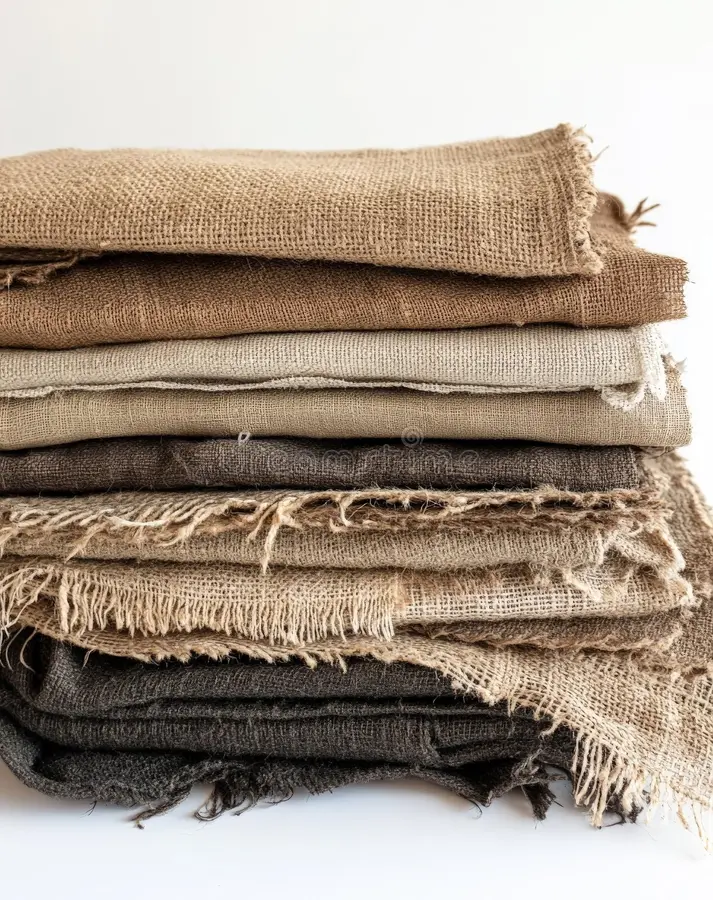
Natural fabrics have expanded their function beyond original fashion trends throughout the recent times. Natural fiber constitutes a crucial element in international initiatives to develop environmentally conscious, sustainable life systems.
The manner in which people today buy products has evolved to emphasize material composition of clothing and home furnishing designs. Customers make fabric selections because they want climate-friendly materials which also provide comfort and attractive appearance.
Individuals from design professions and students of fashion, together with those concerned by environmental effects, need to learn about fabric types. Natural fiber materials need special attention because of their vital role in the ecosystem.
Natural fabrics dominate multiple cozy t-shirt products and breathable linen bedding items provided by nature. The acquisition of fabric production knowledge and maintenance practices generates substantial positive benefits altogether.
What Are Natural Fabrics?
Natural Fabric vs Synthetic Fabric
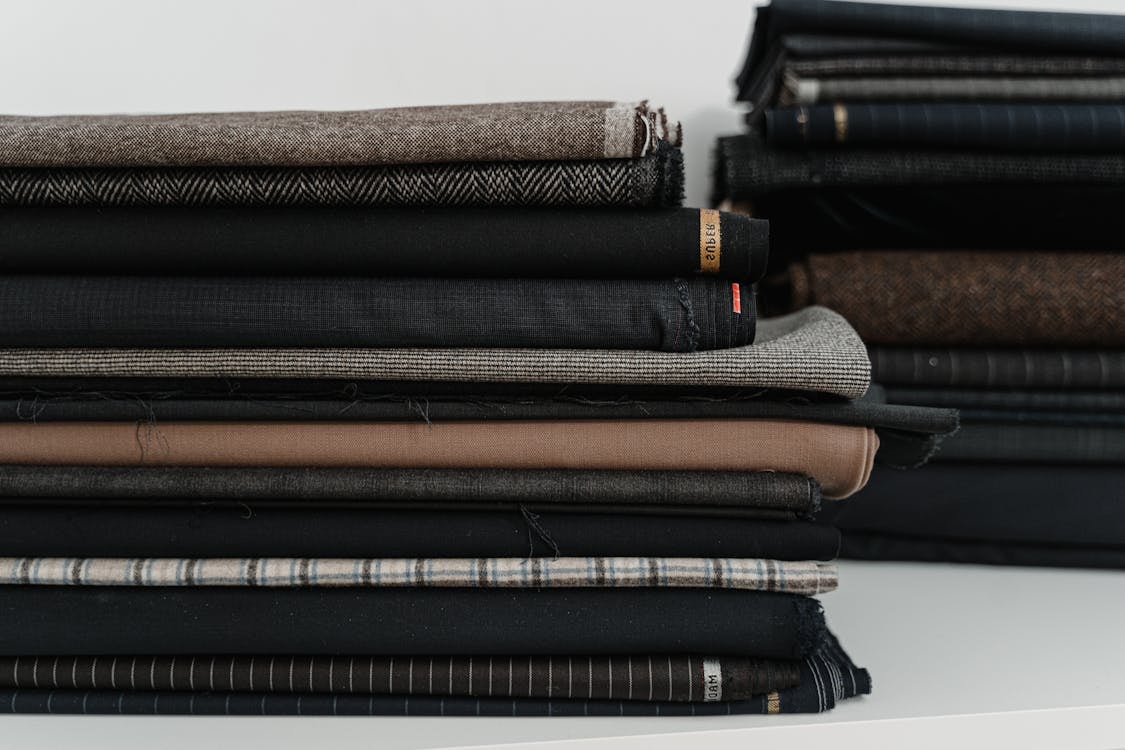
Source: Pexels
The fibers in natural fabrics derive from ecological elements that are most commonly found from plants or animals. The fibers from these materials get spun into the creation of plain woven fabric or knitted fabric, producing cloth. People have depended on these fabrics for thousands of years, making them stay among the most secure textile solutions of today.
The derivation process of natural fabrics depends on renewable energy resources instead of synthetic petroleum chemical production used for polyester and acrylic textiles. Plant fibers produce three natural products, which include cotton, hemp, and linen. Whereas, the animal origin provides wool, silk, and alpaca to humans.
Furthermore, the natural source of these fabrics makes them decompose in the environment. Plus, natural fabrics undergo breakdown in time, so that the earth receives them without adding harmful materials to landfills.
Additionally, when produced into fabrics, they receive minimal chemical processing when compared to synthetic fabric alternatives. Multiple fabrics now exist either as organic materials or through minimal process intervention, which keeps them environmentally safe while ensuring protection for the users who wear them.
Natural textile materials shifted into fashion because consumers seek to lower the industry’s environmental impacts. A growing number of consumers who want to learn about natural fabrics and their importance drives greater awareness about them.
Moreover, the selection of fabrics represents a basic step for people who want to support sustainable fashion and minimize synthetic fiber waste from their clothing collection and household belongings.
Why Choose Natural Fabrics?
1. Sustainability
First of all, natural fabrics are among the most eco-friendly fabrics available. Their production requires fewer synthetic chemicals, and the fibers themselves are renewable. Cotton, for instance, grows in fields. Sheep produce wool every year. These resources can regenerate, unlike oil-based synthetics.
Even better? Natural fibres break down in compost or soil over time. Synthetic fabrics, on the other hand, can take up to 500 years to decompose, and they release microplastics into the water with every wash.
So, if you’re trying to reduce waste, shopping for sustainable fabrics is a smart place to start.
2. Health and Comfort
Secondly, natural fibers have better ventilation properties than synthetic materials do. Through suitable ventilation, they enable heat and moisture to escape so they function well, especially in sunny environments as well as in active use.
They’re also gentler on the skin. Hypoallergenic natural fabrics composed of cotton, bamboo, and silk suit babies, together with people affected by allergies or skin sensitivities.
Plus, these materials automatically conform to how your body shapes itself. The season affects wool as it maintains warmth during harsh winter, yet linen functions well to keep summer temperatures at bay.
3. Durability
Thirdly, some fabrics are surprisingly tough. Hemp and linen fabrics, for example, are known for their strength. They resist wear and tear better than many synthetic fibers and often improve with age.
When cared for properly, fabrics can last for years, reducing the need for frequent replacements and helping you get more out of every purchase.
4. Visual and Textural Appeal
Lastly, natural fibres maintain a permanent appeal because of their organic nature. These materials produce a genuine sense of texture, which also develops a lovely softness with age.
The style of silk and crisp linen, and an extremely soft touch of wool, enhances both apparel fashion as well as household decor with remarkable personality and grace.
Moreover, natural fibres tend to absorb color vibrantly while keeping color pigments that produce robust and saturated color tones.
Types of Natural Fabrics
Plant-Based Fabrics vs Animal-Based Fabrics
The types of fabric fall into two main categories: plant-based and animal-based. Each type has its texture, benefits, and best uses.
Plant-Based Fabrics
Cotton
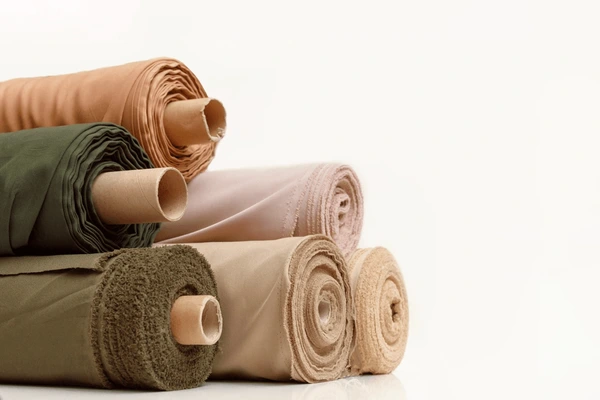
Source: Shutterstock
It is one of the most widely used fabrics. Cotton is known for its softness, versatility, and breathability. Thus, it’s perfect for everyday clothing, bedding, and towels. Plus, organic cotton is even better for the environment, grown without synthetic pesticides or fertilizers.
Linen
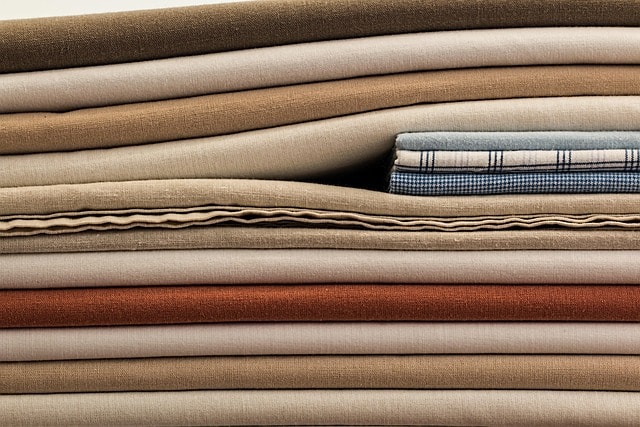
Source: Pixabay
Linen as a fabric derives from the flax plant, which provides exceptional strength and is lightweight. The fabric exhibits both texture quality and a fresh crisp structure by nature. Linen functions best in summer weather because it naturally removes sweat from the skin. Both properties characterize linen fabric because it decomposes naturally and maintains its durability.
Hemp
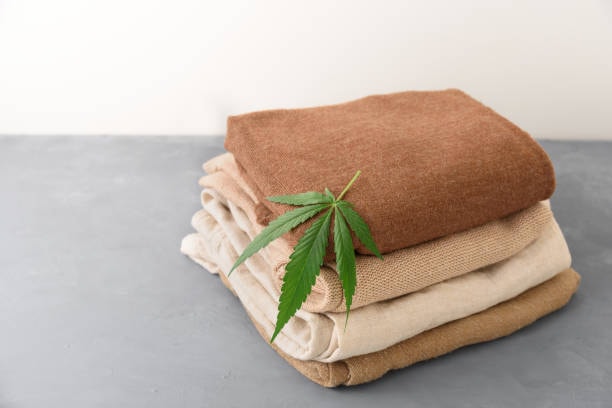
Source: iStock
Hemp plants develop rapidly while needing scarce amounts of water, along with minimal pesticide requirements. The planet supports this material as one of its most enduring natural textile products. The textile fiber exhibits high strength and breathability as well as UV protection.
Hemp clothing becomes softer during its lifespan while maintaining its shape well enough to suit professional attire and evening wear, as well as eco-friendly fashion choices.
Bamboo
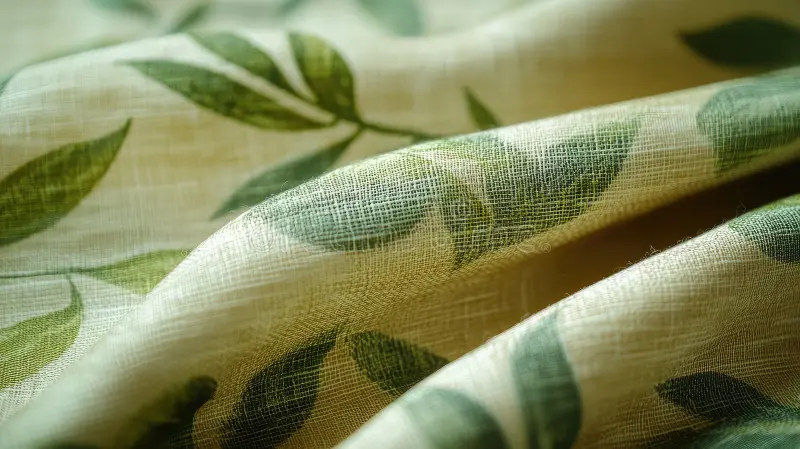
Source: Dreamstime
Bamboo fabric requires processing before use, yet remains a natural, sustainable textile when manufacturers handle its production with sustainability in mind. This fabric offers absolute smoothness alongside antibacterial traits as well as hypoallergenic properties.
The production of bamboo fabric provides an excellent material for undergarments, baby clothing, and activewear.
Animal-Based Fabrics
Wool
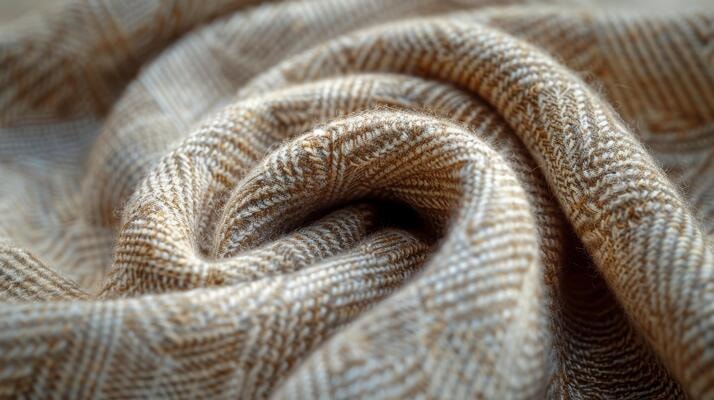
Source: Vecteezy
Harvested from sheep, wool is known for its insulating properties. It is obtained from the hair of domestic sheep and other animals. It keeps you warm, even when it’s damp. Woolen also resists odors and wrinkles, making it great for sweaters, outerwear, and blankets. In addition, merino wool has an especially fine and smooth surface.
Silk
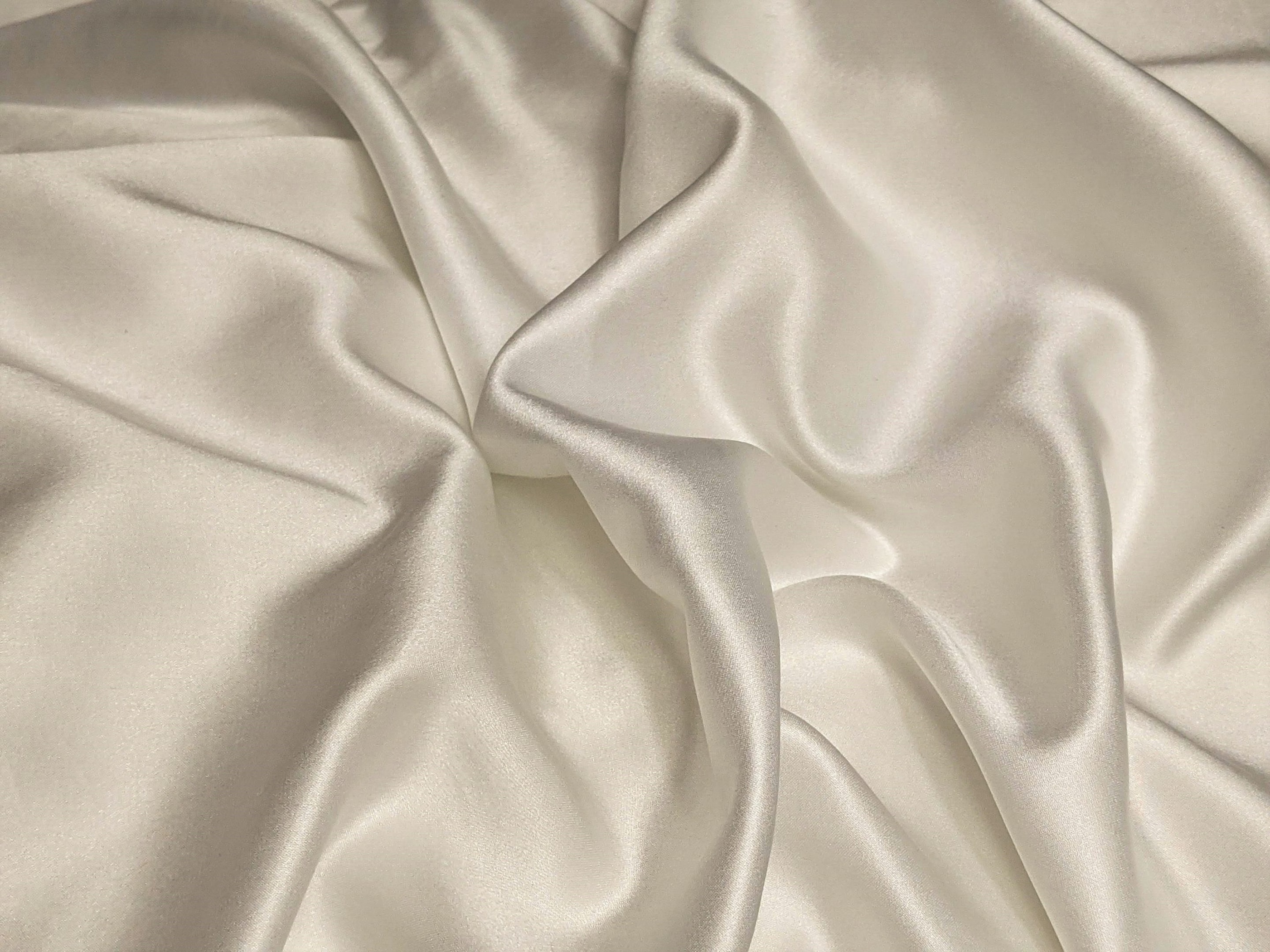
Source: Unsplash
Produced by silkworms, silk is valued for its smooth texture, natural shine, and lightweight feel. It’s a luxurious fabric often used in formal wear, scarves, and bedding. Moreover, silk is also highly breathable and regulates body temperature well.
Cashmere

Source: iStock
Taken from the undercoat of cashmere goats, this fiber is softer and warmer than traditional wool. It’s incredibly lightweight yet cozy—perfect for winter clothing and accessories, high-end sweaters, and wraps.
Alpaca

Source: iStock
Sourced from alpacas in South America, this fiber is soft like cashmere but more durable and hypoallergenic. It doesn’t contain lanolin, which makes it suitable for people with wool sensitivities. Plus, alpaca wool is also water-resistant and ideal for outerwear.
Natural Fabrics List
Here’s a quick reference list of fabrics and what makes them unique:
- Cotton – Soft, breathable, and versatile for all seasons.
- Linen – Strong, cool, quick-drying.
- Hemp – Durable, sustainable, UV-resistant.
- Bamboo – Silky, antibacterial, eco-friendly.
- Wool – Warm, elastic, moisture-wicking.
- Silk – Smooth, soft, breathable, naturally glossy.
- Cashmere – Ultra-soft, warm, lightweight.
- Alpaca – Hypoallergenic, cozy, luxurious.
Each of these has its look and feel. However, the best fabric often depends on its use—whether it’s for the fashion industry, the home textiles industry, or accessories.
How to Care for Natural Fabrics
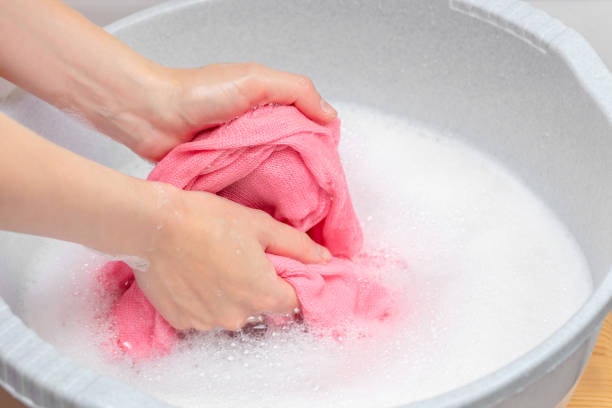
Source: iStock
Taking proper care of fabrics not only keeps them looking great but also helps them last longer—reducing waste and unnecessary replacements.
So, here’s how to extend the life of your natural fiber:
Washing
- Firstly, use cold or lukewarm water. Energy conservation occurs during this process because cold water usage helps protect fabric dimensions.
- Secondly, choose gentle, environmentally friendly detergents. The usage of strong chemical substances affects natural fibers through dissolution.
- Thirdly, avoid over-washing. Air-drying clothes between uses lets you decrease the total wash cycles.
Drying
- Air-dry when possible. Exposure to direct sunlight acts as a disinfectant and freshens up fabrics. However, a dryer leads to premature fabric wear.
- Dryers should be used only with a low-heat setting, and items should be taken out while they maintain a slightly damp state.
Storing
- Keep fabrics in a cool, dry place. Natural fibers can attract mold or pests if stored in damp or sealed environments.
- Plus, use a breathable storage bag. Cotton or linen garment bags help protect delicate items like silk and wool from dust without trapping moisture.
Special Handling
- Silk should be hand-washed or dry-cleaned, depending on the garment.
- Wool and cashmere can be hand-washed with mild soap and laid flat to dry.
- Linen becomes softer over time, but high heat can weaken its fibers.
Proper care not only preserves the quality of your fabrics—it also supports a more eco-friendly lifestyle by reducing energy usage and minimizing waste.
The Future of Natural Fabrics
Sustainable Fashion
Sustainable fashion industry products have become increasingly popular, thus inducing the fabric industry to adapt its strategies.
Various brands now use organic materials together with ethical sourcing principles and eco-friendly production methods to minimize their environmental footprint. Furthermore, the industry transformation relies mainly on natural fibers, which are used by both fashion and home textile businesses.
Innovations are also making natural fabrics even better. We’re seeing:
- Organic cotton is grown without synthetic chemicals
- Recycled materials, wool, and silk that give old fabrics a second life
- Closed-loop bamboo processing that minimizes water and chemical use
Even designers are getting involved. Several companies have chosen to focus on dyes with low environmental impact alongside fair treatment of workers and the creation of patterns that leave no waste.
In addition, people asking about the composition of their clothes and manufacturing methods have led to natural fiber being confirmed as the solution.
Natural recycled materials demonstrate a bright future because they serve dual purposes in sustainable fashion development.
Conclusion
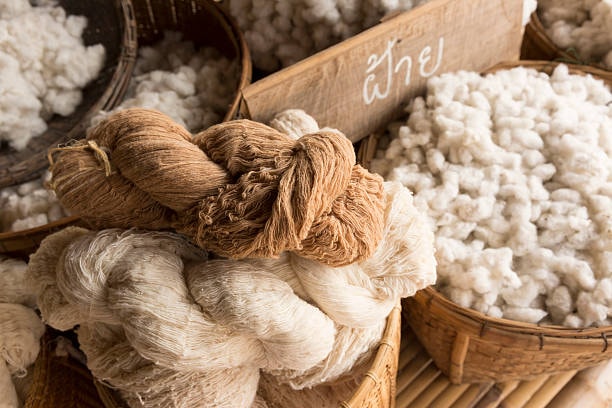
Source: iStock
Natural fabrics represent a vital stride towards developing a mindful, sustainable lifestyle while staying beyond temporary fashion trends. The choice of materials for shopping or designing designates the essential elements for your clothes and upholstery selections.
Moreover, when you select materials from natural fiber, you gain comfort along with breathability while achieving a timeless appearance, but reject both manufacturing waste and chemical pollutants. The fabric selection provides diverse choices which extend from elegant silk quality to enduring hemp material and delicate cotton simplicity.
Additionally, knowledge about diverse fabric types alongside their environmental consequences will enable us to make sustainable choices for our daily decisions. The choice of natural fiber materials helps preserve our planet, promotes healthier conditions for communities, and improves the quality of craftsmanship in each selection.
So, invest your time in searching for various alternatives. You should choose companies that operate with environmentally friendly textile materials. Proper care techniques for your textiles will increase their lifespan. And above all, stay curious because knowledge provides us with better decision-making skills for shopping.
Contact Yanmao Today!
So, if you’re ready to explore quality fabrics for fashion, home, or design—start by browsing trusted textile providers likeYanmao. Let your excellent choices reflect your values. Because sustainability in textiles starts with the materials we use every day.





